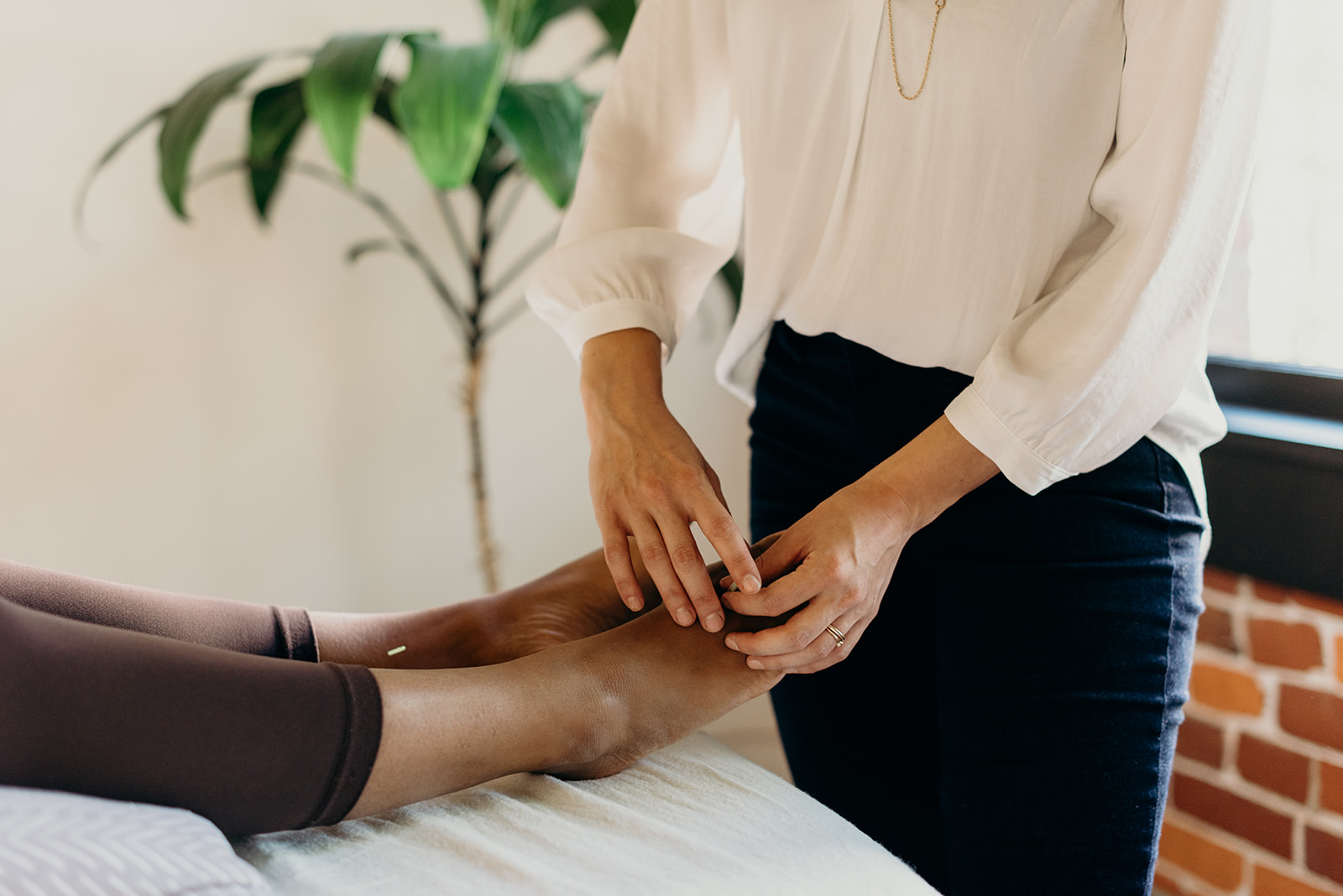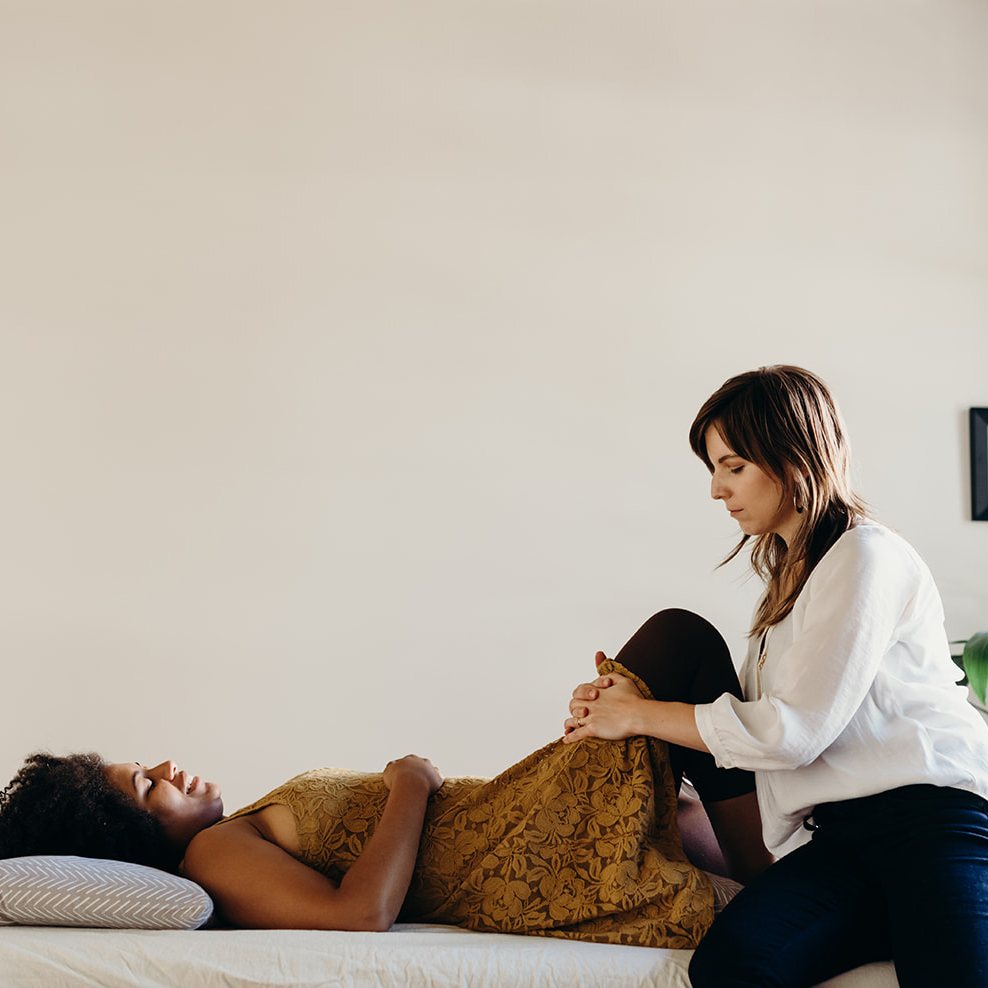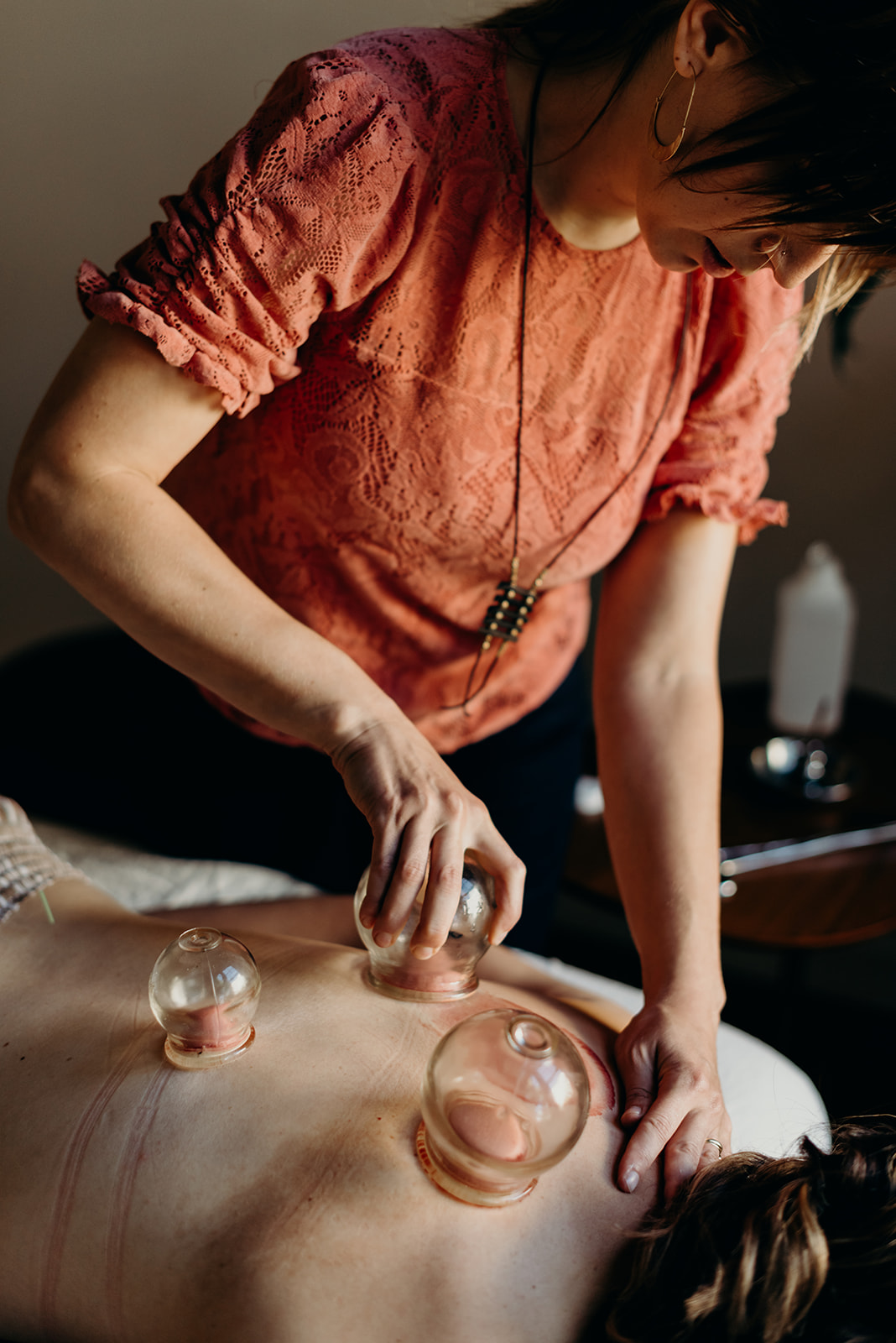Tigard Acupuncture
with Katerina Baratta, MS, LAc

You’re probably reading this article because you heard that acupuncture can help you, and now you’re hoping to find a good practitioner at a Tigard acupuncture clinic near you.
Maybe you tried acupuncture once or twice already, but want to find out if a different style of acupuncture might work better for you (there are many!). Maybe your practitioner retired, moved away, or you’d just like to try a new Tigard acupuncture clinic.
Maybe you’ve never tried acupuncture before and want to find out for yourself what all the hype is about.
Or maybe you’re afraid of needles but still want the benefits, and are hoping to find a practitioner who is skilled at using gentle methods, non-insertive needling, and other supportive techniques.
Whatever your specific reason might be, this article will help you make an informed decision when deciding which acupuncture clinic to go to in Tigard, Oregon.
Here’s what you’ll learn:
- What is acupuncture?
- Acupuncture modalities you may not know about
- Acupuncture vs. conventional medicine
- Does acupuncture hurt?
- Are gentle techniques as effective as deeper needling?
- Is acupuncture really just placebo?
- What does acupuncture treat?
- What makes Katerina Baratta’s treatments stand out?
- What to expect during a treatment
- How many treatments will you need?
- How much does it cost to get acupuncture in Tigard?
- Where to book Tigard Acupuncture
What is Acupuncture?
Acupuncture is a branch of Chinese medicine in which specific points on the body are stimulated in order to support the healthy flow of “qi” or life-force energy. These points are selected based on a complex holistic medical theory that dates back approximately 3000 years.
Most acupuncturists use extremely thin, single-use, sterile stainless steel needles to stimulate these points via insertion, but there are quite a few other, non-insertive techniques that acupuncturists have at their disposal depending on the person and condition they’re treating.
In fact, needles are just one tool in an extensive toolbox of techniques and strategies that acupuncturists use to support healing, restore vitality, and promote equilibrium in their patients.
Some of the other modalities your acupuncturist may use include:
-Moxibustion (aka moxa)
-Non-insertive acupuncture/shonishin
-Bodywork
-Cupping
-Herbal and nutritional support
-Lifestyle recommendations
–Qigong
-Functional medicine
-Exercise medicine
-Strategies from other traditions like Ayurveda, Western herbal medicine, ancient Greek medicine, and other medicine people from around the world

Acupuncture vs. conventional medicine
Despite the fact that the frameworks appear to vary drastically, there is actually a remarkable amount of overlap between ancient Chinese medical theory and modern conventional medicine.
In fact, research into the nervous system, endocrinology, the microbiome, and the interstitium are confirming the accuracy and efficacy of what previously looked like hocus-pocus to many critical westerners. 1, 2, 3, 4
Where modern medicine likes to break things down to the smallest possible components, Chinese medicine views the mind, body, and environment holistically, finding intersections and connections that modern medicine often overlooks.
This is one reason why so many people find relief through Chinese medicine for symptoms that conventionally-trained medical doctors would say are “all in your head.”
Does Acupuncture Hurt?
When people first learn about acupuncture, they usually imagine big, painful, hypodermic-sized needles being stuck into sensitive points on their body.
The truth is, acupuncture needles are on average 10 times smaller than hypodermic needles, and the Japanese style needles (like the ones that Katerina Baratta uses) are even smaller than that, just slightly larger than a hair.
You may hear some practitioners say that acupuncture is completely painless, but this isn’t entirely true.
When needles are inserted, patients often report feeling a small pinch or quick “zing”. A dull ache may be present after insertion, but most of the time they feel nothing at all.
On rare occasion, there can be a more uncomfortable sharp or burning sensation when a needle in inserted. If this happens to you, the needle will quickly be removed and the discomfort usually subsides within a second or two.
Are Gentle Techniques as Effective as Deeper Needling?
With acupuncture dating back at least 2000 years, (Chinese medicine as a whole is much older), it is highly unlikely that the original needles—made of bamboo, bone, thorns, sharp stone, and other relatively coarse materials—would have been inserted very deeply into the body when compared to modern stainless steel needles. 5
In fact, there are acupuncture techniques that don’t require a needle to penetrate the skin at all, and in some cases these can be even more effective than deep needles!

Is Acupuncture Just Placebo?
One of the issues with acupuncture studies is that they are often designed by biomedical researchers who don’t fully understand the diversity of effective acupuncture techniques.
In their experiments, these researchers think they are testing insertive acupuncture against “sham” acupuncture by using a toothpick or similar blunt instrument on acupuncture points as the control. What they don’t realize, however, is that needles don’t have to be inserted in order to have a therapeutic effect.
Still, experiments have shown promising results especially in pain reduction, and more and more evidence is coming out to support acupuncture’s efficacy in treating other conditions as well, including PTSD, insomnia, nausea, women’s health issues, and more. 6, 7, 8, 9
What Does Acupuncture Treat?
In Europe and North America, acupuncture is most famous for treating pain. With studies confirming its efficacy, and because there is such an urgent need for non-addictive pain therapies, pain is also the primary complaint for which most insurance companies will compensate acupuncturists.
But Chinese medicine has been treating a variety of illnesses, imbalances, and diseases of both the mind and body for thousands of years, and with similar success rates to many modern therapies (without as many side-effects!)

Here are just some of the conditions acupuncture can treat:
- Pain
- Stress reduction, trauma, nervous system support
- Headaches, migraines
- Digestive complaints
- Sleep disturbances
- Psycho-emotional suffering, depression, anxiety
- Women’s health (PMS, fertility, perimenopause and menopause)
- Palliative and care-giver support
Is Acupuncture Right for You?
If you are highly sensitive or nervous about acupuncture, don’t just assume that acupuncture isn’t for you.
Instead, look for a practitioner who is well-versed in gentle and non-insertive needle techniques, and find out for yourself what acupuncture can do for you.
What Makes Katerina’s Acupuncture Treatments Stand Out?
If you’re looking for a place to get acupuncture in Tigard, consider booking a session with Katerina Baratta.
Katerina uses a gentle, personalized, and hands-on approach to acupuncture.
She firmly believes that while treatments with a skilled practitioner can absolutely help you supercharge your healing, ultimately, each person is their own best healer. Katerina’s intention, therefore, is to guide and support you in finding the methods and strategies that will work best for you given your current circumstances.
In addition to asking a series of in-depth questions, you will also notice Katerina testing the body’s tissues for tension patterns throughout the treatment. Where other practitioners may rely on standardized, textbook point-protocols when treating their patients, Katerina takes time to check each patient’s body to confirm which points will most benefit the treatment.
Another thing that sets Katerina apart is adept at using bodywork techniques like craniosacral therapy, myofascial release technique, and medical qigong to open these tension patterns up and support the work of the needles.
Finally, Katerina often gives her patients “homework,”—in the form of dietary, herbal, lifestyle, and other recommendations—to strengthen the effects of the treatment between sessions.

What to Expect During a Treatment
Different practitioners have different treatment flows, but most of Katerina’s sessions follow a predictable routine.
Each acupuncture session begins with an interview.
The first session begins with an in-depth conversation, covering everything from your pain-points and main concerns to your sleep habits, digestive patterns, and everything in between.
Follow-up session interviews are shorter and more to-the-point, focusing more on your primary complaints and any symptom updates.

Then comes the treatment.
Once you’re face-up on the treatment table, mat, or treatment chair, (Katerina is happy to tailor the location to your preference,) Katerina will check your pulses to determine if there is an underlying imbalance or root pattern that needs to be treated first.
Depending on what she finds in the pulse and other parts of your body (like the tongue, forearm, abdomen, etc.), she will then insert a few needles as a foundational treatment, and monitor the pulse and body for changes. The second (and sometimes third) set of needles target your primary concerns and surface symptoms, and usually stay in a bit longer.
In addition to acupuncture, Katerina also uses other treatment modalities including bodywork (therapeutic massage), moxibustion, and cupping.
While needles are working their magic, Katerina leaves the room to let you rest. Many patients fall asleep and report feeling very rested and relaxed after these sessions. While she is away, you are given a buzzer in case you need to call her back in at any point.
Some more things to know:
Some treatments are entirely face-up, other times Katerina will ask you if you’re comfortable being treated face-down.
Katerina always does her best to treat patients fully-clothed, but if clothing is too tight or makes it difficult to access a specific part of the body, Katerina may ask you if you’re comfortable moving clothing or changing into a robe.
You are always welcome to decline this request, and there are plenty of distal points that can treat seemingly far-off issues in the body (for example, some of the best points for back pain are found behind the knee, on the ankles, and on the side of the hand!)
How Many Treatments Will You Need?
The short answer is that it varies.
For acute conditions that have been around for less than a week, 1-4 treatments over the course of a couple weeks often does the trick.
Chronic conditions and big injuries are usually more stubborn. It may be recommended to come in for weekly or bi-weekly treatments for a month or two. This gives you the support you need to tame the symptoms and treat the underlying imbalance, before tapering off as symptoms subside.
Once symptoms have stabilized or subsided, many patients like to come in for monthly wellness tune-ups, with more frequent visits scheduled as needed.
Related: How many acupuncture treatments will I need before I feel better?

How Much Does It Cost to Get Acupuncture in Tigard?
Most Oregon insurance plans recognize the proven benefits of acupuncture and therefore cover at least part of 12 or more treatments a year, with similar copays and deductibles to other specialist visits.
In cases where insurance does not cover modalities outside of acupuncture—like moxibustion, bodywork, and cupping— you may be asked to pay an additional fee to pay for those services.
And for those paying out-of-pocket, reduced rates and packages are available to help you keep costs down.
Depending on your plan you may need a referral from a medical doctor, so check your benefits before scheduling an appointment.
Tigard Acupuncture: Book Your Appointment Today
Katerina’s acupuncture treatments are perfect for those who want to take charge of their own health, holistically.
If you’re looking for support to help you heal, build resilience, and show up for life the way you want to, click here to book an acupuncture appointment with Katerina today.
We look forward to meeting you!
References:
- https://www.ncbi.nlm.nih.gov/pmc/articles/PMC3677642/
- https://academic.oup.com/qjmed/article/107/5/341/1563714?login=false
- https://journals.lww.com/jbioxresearch/fulltext/2018/06000/human_microbiome_brings_new_insights_to.8.aspx
- https://www.ncbi.nlm.nih.gov/pmc/articles/PMC8509956/
- https://www.ncbi.nlm.nih.gov/pmc/articles/PMC3995252/
- https://pubmed.ncbi.nlm.nih.gov/36716811/
- https://www.ncbi.nlm.nih.gov/pmc/articles/PMC10187757/
- https://www.pennmedicine.org/updates/blogs/health-and-wellness/2017/march/acupuncture
- https://pubmed.ncbi.nlm.nih.gov/36815166/



